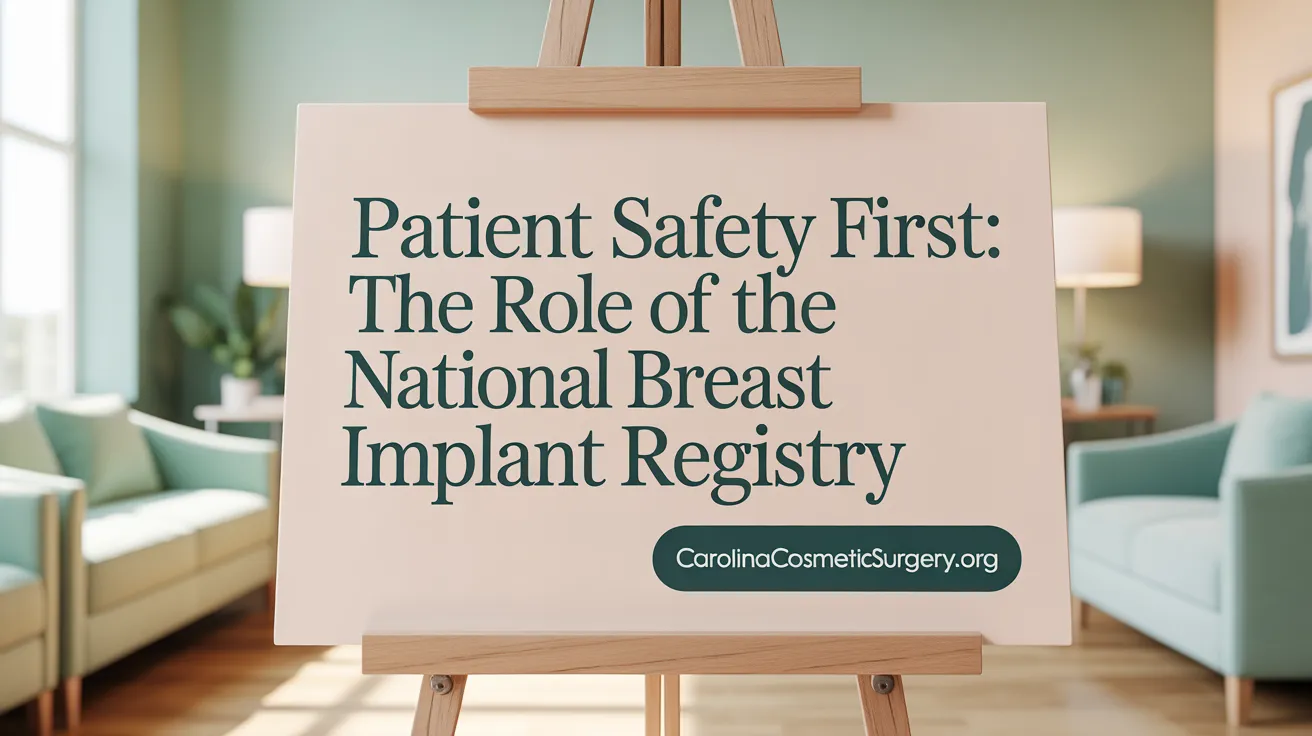Understanding Satisfaction After Breast Augmentation
Breast augmentation remains one of the most popular cosmetic surgeries worldwide, but what does the data truly say about patient satisfaction? Recent studies employing validated instruments like the BREAST-Q questionnaire offer a comprehensive look into how women perceive their outcomes, covering physical appearance, psychological well-being, and overall quality of life. This article delves into long-term satisfaction rates, psychological benefits, factors influencing success, and the scientific insights shaping modern breast augmentation practices.
<!-- VIDEO:eyJsaW5rIjoiaHR0cHM6Ly93d3cueW91dHViZS5jb20vd2F0Y2g/dj03bVB6bzlMNkVqayIsImltYWdlVXJsIjoiaHR0cHM6Ly9lbmNyeXB0ZWQtdGJuMC5nc3RhdGljLmNvbS9pbWFnZXM/cT10Ym46QU5kOUdjVHp2NWZTOXBYSmFyNy1TTmItRTZwRXNob0pqOU1LdkF2WmdyelNHVHJDdmM1ZCZzIiwidGl0bGUiOiJNb3RpdmEgVW52ZWlsZWQ6IFdoYXQgWW91IE5lZWQgdG8gS25vdyBBYm91dCB0aGUgTmV3IEZEQSAuLi4iLCJzbmlwcGV0IjoiLi4uIGJyZWFzdCBhdWdtZW50YXRpb24gbGFuZHNjYXBlOiB0aGUgRkRBLWFwcHJvdmVkIE1vdGl2YSBpbXBsYW50LiAuLi4gSGlnaCBwYXRpZW50IHNhdGlzZmFjdGlvbiByYXRlcywgd2l0aCB3b21lbiBhcm91bmQgdGhlIGdsb2JlIHByYWlzaW5nIC4uLiJ9 -->Long-Term Satisfaction Rates and Patient-Reported Outcomes

What are the long-term satisfaction rates for breast augmentation based on recent studies?
Recent research consistently shows high levels of satisfaction among women who have undergone breast augmentation. One large study involving 1,058 women over a span of five years found that 98% of participants reported that their results met or exceeded expectations. This persistent positive outlook was supported by improvements in several aspects of well-being.
Specifically, patients experienced significant increases in satisfaction with their breasts, with preoperative scores rising from about 26.3 to approximately 72.7 postoperatively. Psychosocial well-being also saw notable progress, moving from a score of 37.2 before surgery to 75.0 afterward. The follow-up period in the study averaged around four years, indicating that these benefits tend to be sustained long-term.
Additional insights come from studies comparing different surgical techniques. Autologous tissue methods like autoimplant-mastopexy have demonstrated higher satisfaction than traditional augmentation with silicone implants. Participants reported less long-term issues and expressed greater contentment with natural feel and appearance.
Overall, the evidence suggests that most women achieve durable, satisfying outcomes after breast augmentation, especially when combined with procedures utilizing their own tissues. These findings reassure prospective patients about the long-lasting, positive impact of breast enhancement surgeries.
Patient-Reported Psychological Benefits and Quality of Life Improvements
 'Breast augmentation not only enhances physical appearance but also significantly impacts women's mental health and overall quality of life. Multiple scientific studies, including one published in Plastic and Reconstructive Surgery, have documented these benefits.
'Breast augmentation not only enhances physical appearance but also significantly impacts women's mental health and overall quality of life. Multiple scientific studies, including one published in Plastic and Reconstructive Surgery, have documented these benefits.
Women undergoing the procedure report notable gains in self-esteem and psychosocial well-being. Prior to surgery, a large percentage of women (86%) expressed self-consciousness about their breasts. Postoperatively, this dropped dramatically to just 13%, indicating a substantial boost in confidence. BREAST-Q scores, a validated measure used in research, reflect these positive changes, with satisfaction related to breasts increasing from an average of 49.4 to 86.7 after surgery.
Besides self-esteem, sexual well-being experienced significant improvement, with scores rising from 28.7 to 62.3. These enhancements suggest women feel more comfortable and confident in intimate settings, which can positively influence relationships.
Patients also report a reduction in preoperative worries, which often include concerns about body image and social perceptions. The improvements in these areas are associated with higher self-reporting of quality of life, with 64% of women noting better overall well-being following their procedures. Additionally, the positive effects on mental health include decreased anxiety about appearance and increased life satisfaction.
The scientific evidence underscores that breast augmentation can have lasting psychological benefits, contributing to a more positive self-image and improved social functioning. While physical recovery may involve some discomfort—such as an average pain score of 5.9 during recovery—these psychological gains are well worth the temporary discomfort. Overall, the research shows that many women experience meaningful improvements in mental health and quality of life after breast augmentation.'}#}])} </Assistant>}}}#}}}}} }}}}} }}}} }}} }}}} }}}} }}}} }}}} }}}} }}}} }}} } }}}} }}}} }}}} }}}} }}}} }}}} }}}} }}}} }}}} }}} } }}}} }}}} }}}} }}}} }}}} }}}} }}}} }}}} }}}} }}}} }}}} }}}} }}}} }}}} }}}} }}}} }}}} }}}} }}}} }}}} }}}} }}}} }}}} }}}} }}}} }}}} }}}} }}}} }}}} }}}} }}}} }}}} }}}} }}}} }}}} }}}} }}}} }}}} }}}} }}}} }}}} }}}} }}}} }}}} }}}} }}}} }}}} }}}} }}}} }}}} }}}} }}}} }}}} }}}} }}}} }}}} }}}} }}}} }}}} }}}} }}}} }}}} }}}} }}}} }}}} }}}} }}}} }}}} }}}} }}}} }}}} }}}} }}}} }}}} }}}} }}}} }}}} }}}} }}}} }}}} }}}} }}}} }}}} }}}} }}}} }}}} }}}} }}}} }}}} }}}} }}}} }}}} }}}} }}}} }}}} }}}} }}}} }}}} }}}} }}}} }}}} }}}} }}}} }}}} }}}} }}}} }}}} }}}} }}}} }}}} }}}} }}}} }}}} }}}} }}}} }}}} }}}} }}}} }}}} }}}} }}}} }}}} }}}} }}}} }}}} }}}} }}}} }}}} }}}} }}},{
Statistical Analysis of Satisfaction Rates and Key Outcome Metrics
What does evidence-based research indicate about overall satisfaction and patient-reported outcomes following breast augmentation?
Research shows that most women who undergo breast augmentation report high levels of satisfaction with their results. A recent study published in Plastic and Reconstructive Surgery evaluated 225 women over five years and found that an impressive 98% of participants felt their surgical outcomes met or exceeded expectations.
The study utilized the BREAST-Q questionnaire, a validated tool for assessing patient satisfaction across multiple domains. Preoperatively, women reported relatively low satisfaction scores, but these improved dramatically after surgery. Satisfaction with breasts increased from a mean of 49.4 to 86.7, while psychosocial well-being improved from 37.9 to 68.0, and sexual well-being rose from 28.7 to 62.3. The individual significance of improvement was evident in all cases, with statistical significance at p < 0.001.
Patient perceptions of their appearance and self-confidence also showed remarkable changes. Before surgery, about 86% of women felt self-conscious about their breasts; post-surgery, that number dropped to just 13%. Most women (85%) were satisfied with their breast size, describing it as 'just right,' though 13% preferred a larger size.
Physical recovery was generally well managed. Women reported an average pain score of 5.9 during recovery, and they used prescription pain medication for about five days. Most returned to normal activities within approximately 25 days.
Despite variations in individual factors, the study revealed that only about 6% of the satisfaction outcomes could be directly explained by preoperative and anatomical factors. When postoperative satisfaction scores were included, this explained up to 34% of the results. Better satisfaction was linked with higher age, more positive preoperative assessments, and higher postoperative psychosocial, physical, and sexual well-being.
Overall, evidence underscores that breast augmentation can produce substantial improvements in appearance, self-esteem, and quality of life, with high satisfaction rates confirmed through rigorous, validated measures.
| Satisfaction Measures | Preoperative Scores | Postoperative Scores | Change | Notes |
|---|---|---|---|---|
| Satisfaction with breasts | 49.4 | 86.7 | +37.3 | Significant improvement achieved (p < 0.001) |
| Psychosocial well-being | 37.9 | 68.0 | +30.1 | Reflecting improved mental and social health |
| Sexual well-being | 28.7 | 62.3 | +33.6 | Marked enhancement in sexual self-perception |
| Breast size satisfaction | 85% 'just right' | N/A | N/A | Majority satisfied, a small percentage wanted larger size |
| Scar dissatisfaction | 1% | N/A | N/A | Most scars located in the crease, with minimal dissatisfaction |
In conclusion, contemporary evidence highlights high satisfaction and significant psychosocial benefits following breast augmentation, indicating its effectiveness in enhancing women’s self-image and quality of life.
Influential Factors Affecting Patient Satisfaction and Success Rates

What are the key factors influencing patient satisfaction and success rates after breast augmentation?
Patient satisfaction after breast augmentation surgery is shaped by numerous elements ranging from individual characteristics to surgical methods.
Older women tend to report higher satisfaction levels, potentially due to more realistic expectations or different aesthetic preferences. Conversely, higher BMI, post-surgical weight gain, and previous breastfeeding experiences can be associated with lower satisfaction, possibly affecting aesthetic results or tissue behavior.
Surgical techniques also play a significant role. Procedures involving placement of implants under the muscle (submuscular placement) are linked with increased patient satisfaction compared to those placed above the muscle (subglandular placement). This preference is often related to better contour and reduced visibility of the implant.
Interestingly, the type of implant—saline or silicone—and the volume chosen do not have a major impact on satisfaction. However, the amount of volumetric change, particularly in bra size, influences outcomes, with larger increases generally correlating with higher satisfaction. Most women who received implants averaging 390 cc reported positive results, with some preferring larger sizes.
Psychosocial and physical well-being are essential. Preoperative scores indicating self-esteem, body image, and overall mental health usually improve post-surgery. Enhanced satisfaction correlates with improvements in psychosocial dimensions, sexual satisfaction, and physical comfort. Significant gains in these areas have been observed in all cases, highlighting the importance of considering mental health as part of the surgical outcome.
Overall, the combination of patient demographics, surgical approach, implant characteristics, and improvements in mental and physical health contribute to the success of breast augmentation procedures. Recognizing these factors can help surgeons tailor treatments and set realistic expectations to maximize satisfaction.
The Role of Aesthetic Principles: Understanding the '45:55 Breast Rule'

What is the breast proportion known as the "45:55 breast rule" and its significance in breast augmentation?
The "45:55 breast rule" describes an ideal proportion of breast tissue placement where about 45% of the breast volume is situated above the nipple, and 55% below. This ratio is based on the Golden Ratio, a centuries-old mathematical principle associated with beauty and harmony in nature and art.
Surgeons rely on this proportion to create natural, balanced-looking results. During breast augmentation, measuring from the nipple to the top and bottom of the breast helps determine if the desired ratio is achieved.
Applying the 45:55 guideline helps ensure that the augmented breasts look proportionate, harmonious, and aligned with fundamental aesthetic ideals. This focus on proportion contributes to more natural appearances and higher patient satisfaction.
In practice, surgeons may use tools like imaging and intraoperative measurements to assess these ratios, tailoring choices of implant size and placement to match each patient's specific anatomy. This method helps minimize unnatural shapes and emphasizes natural harmony, which is often reflected in high satisfaction rates post-surgery.
Tracking Breast Implant Outcomes: The Importance of National Registries

Is there an official database that tracks breast implant data and outcomes?
Yes, there is an established system called the National Breast Implant Registry (NBIR). This registry was created to closely monitor the safety, performance, and outcomes of breast implant procedures across the United States.
The NBIR was developed through a collaboration involving the Food and Drug Administration (FDA), participating physicians, and manufacturers. It functions as the primary data collection platform, providing valuable insights into how breast implants perform over time and helping to identify potential safety concerns.
This comprehensive registry has collected data from more than 145,000 cases as of August 2025, with contributions from nearly 1,830 doctors. It uses advanced technology to ensure accurate device tracking, such as the Global Unique Device Identification Database (GUDID). This system allows for detailed monitoring of different implant models and brands.
Importantly, the NBIR is designed with patient privacy in mind. It complies with the Health Insurance Portability and Accountability Act (HIPAA), safeguarding personal health information. It has been reviewed by independent experts who confirmed that participation in the registry does not require Institutional Review Board (IRB) approval, as it is not considered research.
The data collected is analyzed regularly, and the findings are shared publicly through reports and trend analyses on the registry’s official website. These transparent updates help both clinicians and patients make informed decisions based on current safety and performance data. Overall, the NBIR is a vital tool in advancing breast implant safety and improving patient care.
Concluding Insights on Satisfaction After Breast Augmentation
Data from multiple rigorous studies paints a clear picture: breast augmentation yields high satisfaction rates that extend well beyond the immediate postoperative period. Improvements in physical appearance lead to enhanced psychosocial and sexual well-being, boosting overall quality of life. While anatomical and procedural factors influence outcomes to a degree, patient perception and psychological benefits are central drivers of satisfaction. Modern aesthetic principles, including guidelines like the 45:55 breast rule, help surgeons achieve more natural and pleasing results. Furthermore, national registries such as the NBIR play a crucial role in tracking safety and efficacy, ensuring continuous advancement in patient care. These comprehensive insights offer reassurance for prospective patients considering breast augmentation, highlighting not only the physical transformation but also meaningful psychological improvement.
References
- Breast Augmentation Patients Report High Satisfaction Rates | ASPS
- The effect of breast augmentation surgery on quality of life ...
- Factors contributing to patient-reported satisfaction with breast ...
- Long-term results measured by BREAST-Q reveal higher patient ...
- Factors Influencing Patient Satisfaction With Breast Augmentation
- Main Factors Influencing Patient Satisfaction After Primary Breast ...
- Breast-Q - Breast Augmentation - Outcomes and Satisfaction
- Satisfaction and quality of life in women who undergo breast surgery
- The effect of breast augmentation surgery on quality of life ...
- Quality of Life Improves after Breast Augmentation | ASPS
